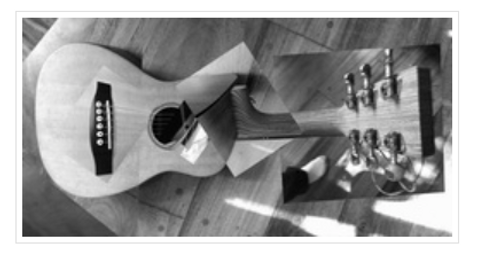Photography 12
Lesson #6 "Joiners" - David Hockney inspired image

"My Mother, Bolton Abbey"

"Telephone Pole-1982"

"Photographing Annie Leibovitz While She Is Photographing Me"
Hockney's creation of the "joiners" occurred accidentally. He noticed in the late sixties that photographers were using cameras with wide-angle lenses to take pictures. He did not like such photographs because they always came out somewhat distorted. He took Polaroid shots of the living room and glued them together, not intending for them to be a composition on their own. Upon looking at the final composition, he realized it created a narrative, as if the viewer was moving through the room. He began to work more and more with photography after this discovery and even stopped painting for a period of time to exclusively pursue this new style of photography.
Big Idea
How can you create narrative, evoke the feeling of movement, a sense of time through the use of fragmentation and layering of imagery.
-
How do you see the world? Look around you - do you see the scene in front of you as a whole scene, a neat little square with every thing visible at once - just like a photograph or painting? Or do you see a variety of elements and fragments?
Choose a variety of subjects to experiment with just make sure your composition has a strong focal point and line/shapes/colours that would fragment in interesting ways.
Part 1
Shooting Assignment: Find a minimum of 3 DIFFERENT locations/compositions and from one good vantage point, take multiple zoomed in shots of all the pieces within.
Tips
-
Take a shot of the the entire scene for reference.
-
Then ZOOM IN and shoot CLOSE UP shots of different fragments of your subject.
-
Shoot the entire scene, try shooting a whole row across the top of your subject, then shoot a whole row below that, then below that, etc until you know you've covered your whole subject.
-
Each shot should OVERLAP the next, so that you don't have any gaps in your final piece.
-
Don't move from where you are standing during the entire time you are shooting. Keep your zoom the same as well.
-
Try tilting your camera left or right as you shoot to get interesting angles.
-
Mix it up, shoot both portrait and landscape
IDEAS FOR SUBJECT MATTER.....

A group of your friends, posed creatively. They can stay still during the shoot or you can allow slight movement between shots for a more "fragmented" look.

It could be as simple as a park bench, chair or desk.

Something important to you, or symbolic of something important to you- a musical instrument, art supplies, sports equipment, your car, etc...

A simple "still-life" of objects you have on you or around you in the classroom... something as simple as your phone on a desk, or a pile of books and papers.

A large panoramic view of the classroom, lunchroom, gymnasium, auditorium, etc. Or your messy bedroom if you are shooting at home.


A simple "still-life" of objects you have on you or around you in the classroom... something as simple as your phone on a desk, or a pile of books and papers.
A portrait of someone working or doing something, allow them to move slightly as you shoot to capture the event unfolding over time...

Your computer desk or workspace. Try to have your hands or feet sneak into one or two of the photos to show your presence, just as Hockney did in many of his photos.
Part 2
The Build
At this point, after completing lesson 2 and 4 you should have a good idea as to how this works.
-
Open a new file in photoshop, size 13" by 19" either landscape or portrait orientation, 300 dpi, white fill, mode RGB.
-
Select all your images from a folder on your desktop and drag directly into your file. Each image will be a smart object which means that you will be able to edit them independently for exposure control.
-
Select all your image layers - Command T - to scale them all down at once.
-
Place your images
-
Move your layers up and down the stack to reveal or conceal.
-
Drag over all images to centre
-
Use fx to create a drop shadow - Hold down option to drag that effect to other layers for constancy.
Presentation
- 3 contact sheets of your 3 most successful locations - minimum of twenty images each.
- 2 final edited compositions, sized 13" by 19", 300 dpi, jpeg.
For Inspiration




